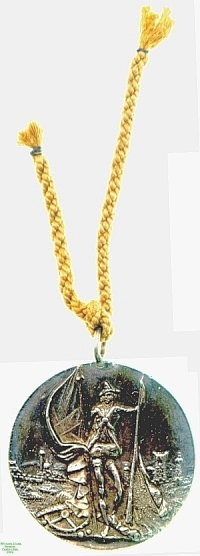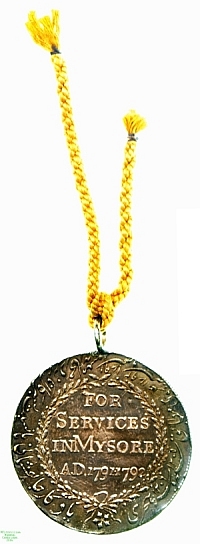Mysore Campaign Medal, 1793 (Third Anglo-Mysore War)
Mysore, in the far south of modern India, was the centre of a kingdom from the fifteenth century until 1947, but from the late eighteenth century and especially after the close of the Anglo-Maratha Wars one that felt itself increasingly menaced by the growing territory of the British East India Company. This led Tipu Sultan, the so-called Tiger of Mysore, to make an alliance with France prior to attacking the British Protectorate of Travancore in 1790. The French Revolution of that year meant that the aid on which Tipu had relied did not transpire, and the next two years saw an eventual series of British successes under General Cornwallis for the British East India Company against fortress towns with the result that Mysore lost considerable amounts of territory in the eventual peace.
At the close of the campaign, the British government, by means of the East India Co., issued this medal to its Indian troops who had served in it.
This medal, as were they all, is unnamed, and its recipient, who would have been one of the many different nationalities of Indian troops employed by the Company on this campaign, cannot be retrieved. Lester Watson purchased the medal from the dealer Gifford in 1927.

